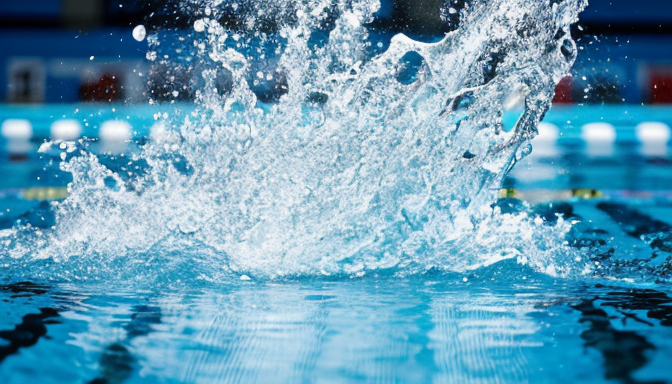This article explores various swimming techniques tailored for swimmers at different skill levels, aiming to enhance performance, efficiency, and enjoyment in the water.
Are you just dipping your toes into the vast ocean of swimming? Mastering the basics is essential! As a beginner, you’ll want to focus on crucial techniques like breathing, floating, and the basic strokes. These foundational skills not only build your confidence but also help you feel more comfortable in the water. Think of it like learning to ride a bike; once you get the hang of balancing, pedaling, and steering, the world opens up! Start with the freestyle stroke, which is often the most natural for beginners. Practice inhaling through your mouth while your face is in the water and exhaling through your nose. Remember, it’s all about rhythm!
If you’re ready to take your swim game to the next level, it’s time to refine your skills with advanced techniques. Competitive swimmers should focus on improving their starts, turns, and overall stroke efficiency. Imagine the thrill of a race; every second counts! A strong start can set the tone for your entire performance. Work on your explosive dive and streamline position to cut through the water like a knife. Additionally, mastering flip turns can save you precious time at the wall. Consider creating a training schedule that incorporates these elements regularly to ensure you’re always improving.
Fundamental Techniques for Beginners
When you’re just starting your swimming journey, it can feel like you’re stepping into a whole new world. The water might seem daunting, but mastering the fundamental techniques can transform your experience from fearful to fabulous! First up, let’s talk about freestyle. This stroke is often the go-to for beginners because it’s all about rhythm and efficiency. Focus on your breathing—inhale when your head is turned to the side and exhale when your face is in the water. It’s like a dance; find your groove!
Next, we have the backstroke. Picture yourself floating on your back, gazing at the sky. It’s not just relaxing; it’s a great way to build confidence. Keep your arms moving in a circular motion while your legs flutter gently beneath you. Remember, it’s okay to take it slow—progress will come with practice!
Now, let’s dive into the breaststroke. This one requires a bit more coordination. Think of it as a frog swimming through the water. Your arms and legs work together in a synchronized motion, creating a powerful yet smooth glide. And don’t forget the butterfly! Although it’s often considered advanced, beginners can start with the dolphin kick and arm movements separately before combining them. It’s like learning to ride a bike—practice makes perfect!
In summary, mastering these strokes will not only build your confidence but also enhance your overall swimming experience. So, grab your goggles and get ready to make a splash!

Advanced Techniques for Competitive Swimmers
For those who are ready to take their swimming to the next level, mastering freestyle, backstroke, breaststroke, and butterfly is essential. Each stroke has its own unique nuances that can significantly enhance your performance. Have you ever noticed how the best swimmers seem to glide effortlessly through the water? That’s not just talent; it’s technique!
Let’s dive deeper into the specifics. For freestyle, focus on your body position and arm technique. A streamlined body reduces drag, allowing you to move faster. In backstroke, maintaining a consistent kick and proper rotation of the hips can make a world of difference. Breaststroke requires timing; the kick and pull must synchronize perfectly to maximize propulsion. Lastly, the butterfly is all about rhythm—finding that sweet spot between power and flow can elevate your race times.
Here’s a quick comparison table to highlight these strokes:
| Stroke | Key Technique | Common Mistake |
|---|---|---|
| Freestyle | Streamlined body position | Incorrect arm entry |
| Backstroke | Consistent kick and hip rotation | Overreaching arms |
| Breaststroke | Timing of kick and pull | Rushing the stroke |
| Butterfly | Rhythm and body undulation | Using arms too much |
Incorporating these advanced techniques into your training will not only improve your efficiency but also make your time in the pool much more enjoyable. Remember, every great swimmer started somewhere, so keep pushing your limits and have fun with it!
Frequently Asked Questions
- What are the basic swimming techniques I should learn as a beginner?
As a beginner, it’s crucial to master the fundamentals like breathing, floating, and basic strokes such as the freestyle and backstroke. These techniques build your confidence and help you feel more comfortable in the water.
- How can I improve my swimming efficiency?
Improving your swimming efficiency involves focusing on your stroke technique, body position, and breathing patterns. Regular practice and possibly working with a coach can help identify areas for improvement.
- What advanced techniques should competitive swimmers focus on?
Competitive swimmers should refine their skills by practicing starts, turns, and enhancing overall stroke efficiency. These elements can significantly impact your performance during races.
- How often should I practice to see improvements?
Consistency is key! Aim for at least 3-4 swim sessions a week to see noticeable improvements in your technique and overall performance.
- Can swimming help with overall fitness?
Absolutely! Swimming is a full-body workout that improves cardiovascular health, builds muscle strength, and enhances flexibility. It’s a fantastic way to stay fit while having fun!